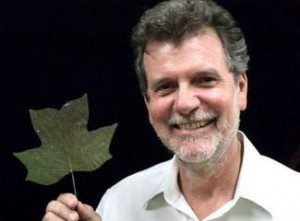Here at WoWasis, we’re often curious about what kind of tree we’re seeing in Asia, but don’t want to carry a tree guide (book or human) around with us. So now there’s a solution, that while focused on North American trees, will allow iPhone and iPad users to begin identifying Asian trees as well. It’s called Leafsnap. In essence, it allows users to snap a photo of a leaf on a white background, upload it to the Leafsnap website, and receive data on which tree it’s from. It uses facial recognition technology, and for a database, uses trees already identified in New York City’s Central Park (which has a number of Asian trees in its inventory), and Washington D.C.’s Rock Creek Park.
Here’s the story, from Leafsnap’s website:
Columbia University, the University of Maryland, and the Smithsonian Institution are working on visual recognition software to help identify species from photographs. Leafsnap is the first in a series of electronic field guides being developed to demonstrate this new technology. This free mobile app helps identify tree species from photographs of their leaves and contains beautiful high-resolution images of their flowers, fruit, petiole, seeds, and bark. Leafsnap currently includes the trees of New York City and Washington, D.C., and will soon grow to cover the trees of the entire continental United States.
Leafsnap turns users into citizen scientists, automatically sharing images, species identifications, and geo-coded stamps of species locations with a community of scientists who will use the stream of data to map and monitor the ebb and flow of flora nationwide.
The Leafsnap family of electronic field guides aims to leverage digital applications and mobile devices to build an ever-greater awareness of and appreciation for biodiversity. Click on “Species” above to browse Leafsnap’s gallery of species.
The genesis of Leafsnap was the realization that many techniques used for face recognition developed by Professor Peter Belhumeur and Professor David Jacobs, of the Computer Science departments of Columbia University and the University of Maryland, respectively, could be applied to automatic species identification.
Professors Jacobs and Belhumeur approached Dr. John Kress, Chief Botanist at the Smithsonian, to start a collaborative effort for designing and building such a system for plant species. Columbia and the University of Maryland designed and implemented the visual recognition system used for automatic identification. In addition, Columbia University designed and wrote the iPhone, iPad, and Android apps, the leafsnap.com website, and wrote the code that powers the recognition servers. The Smithsonian was instrumental in collecting the datasets of leaf species and supervising the curation efforts throughout the course of the project. As part of this effort, the Smithsonian contracted the not-for-profit nature photography group Finding Species, which collected and photographed the high-quality photos available in the apps and the website.
WoWasis spoke with botanist John Kress, principal investigator at the Smithsonian for the Leafsnap project, who informed us that Central Park’s Asian tree inventory could be a valuable asset for tree spotters using Leafsnap in the tropics. The application is really still in its formative stages, and may be ported to other mobile devices in the future as well.

I just like the helpful information you supply in your articles. I will bookmark your blog and test once more right here regularly.